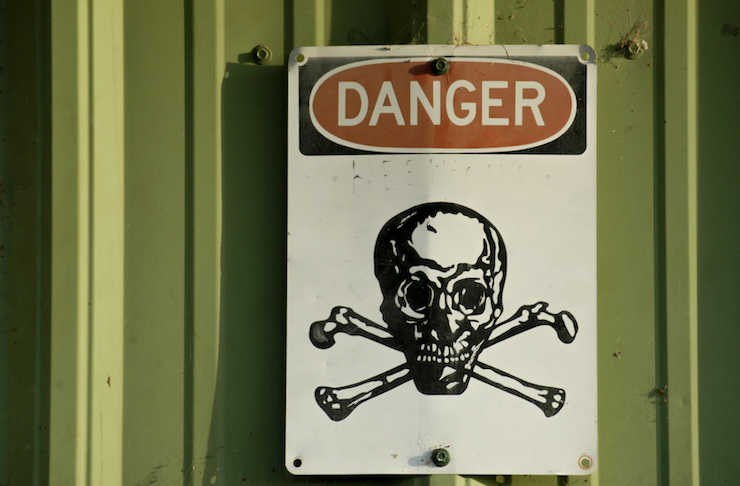
5 Behaviors That Are Toxic to Company Culture
Whether you’re a startup founder, an HR executive, or even a concerned employee trying to make your company’s culture better, you’ll know that there’s no one right answer to the question of how to build a positive company culture. A good starting place is understanding the behaviors that can lead to a bad environment—and then adjusting your own strategies to fend off toxic habits.
Poor communicationWhile it may sound simple, encouraging regular, collaborative communication between employees—of all levels and job functions—is perhaps one of the most significant challenges that management teams face in building a great company culture. Poor communication can lead to significant distrust not only of management, but also between employees.
Communication issues can take many forms. In some cases, complete lack of communication can be the issue: For example, when an employee hears about a major development or change after it’s been implemented. Indirect communication can result in additional problems, such as when employees hear about important information from colleagues, customers, in the news, etc—from anyone but the person they should have heard it from.
Issues can also arise when something is communicated in the wrong way, such as when a manager gives misleading or confusing information in order to avoid an uncomfortable conversation.
Regardless of the type of issue, it’s in everyone’s best interest to encourage better communication habits, including transparent conversations about what’s going on with the company and team, regular feedback sessions, and even difficult discussions around performance and other potentially awkward topics.
Lack of transparencyTied to—but distinct from—communication, transparency is another key element in helping employees to feel bought in and motivated by working with others and for the company. Regular and effective communication is an important starting place, but opaque communication—no matter how frequent—can be just as toxic.
That said, don’t mistake transparency for oversharing, as you’ll risk wasting everybody’s time, including your own. There’s a happy medium which includes discussing broader company changes, values, goals, etc. as well as the same topics down to the team level, but not overcommunicating about things that aren’t relevant.
Cliques and negative gossipWhile friendships between employees can be a positive thing, cliques focused on negative gossip can be a huge risk to company culture. These groups of employees often take any news, good or bad, spin it towards the negative, and then re-disseminate it more broadly.
Because these cliques tend to be tight-knit groups, other employees who haven’t developed their own friendships at work may run the risk of falling into the same habits, causing a serious downward spiral in employee morale. Whether you’re a manager or an employee concerned about cliques in your workplace, it’s worth the effort to prevent gossip—and when it does arise, to deal with it effectively.
The wrong performance management systemsCompanies are increasingly removing forced rankings from their performance management strategies (more than 50 large companies did so by the end of 2015), and leaders might consider whether this approach would benefit their culture. In some cases, forced rankings can lead to toxic behaviors amongst staff, such as backstabbing or holding back information as a means to personal advancement. Researchers have found that this may be a result of employees’ sense of status and fairness coming into question, which tends to activate intense reactions in the brain—perhaps leading to behavior which is ultimately detrimental to the company.
As an alternative to performance ratings determined by a single number, these companies are instead focusing on creating the right environment for ongoing and open conversations between managers and their staff. While this might not be the right strategy for every company, company leaders and HR executives should review whether their performance management are working towards the culture they’d like to see in the company—or creating a toxic environment amongst employees.
An ‘every man for himself’ mentalityRelated to forced rankings but wider-reaching, the mentality that each employee should work to benefit only him or herself can be extremely toxic to company culture, particularly when it gets in the way of effective teamwork.
This sort of mentality could be a result of many different things, including all of the above as well as dictator managers and outright sabotage and/or bullying. And this mindset can spread like wildfire, as even a single employee failing to collaborate effectively can cause a complete breakdown in communication and teamwork—even if the rest of his or her colleagues didn’t initially think in this way.
Related blog posts

Is My Job Too Much Work for One Person?
4 Strategies to Address Feeling Overwhelmed at Work Whether you work for a startup or...

Are You Burnt Out (Or Do You Really Just Hate Your Job)?
The difference between the two and what to do about it Your career may be a large part of your...

4 Things Every Engineer Must Do Before A Technical Interview
In order to become an expert on something, mere talent or aptitude is not enough. According to...

Where Do Engineer Salaries Pay the Best (Highest) Standard of Living?
Opportunity shifts from higher cost-of-living markets The rise in remote work prompted...

What Makes You Love Your Job? 6 Crucial Job Happiness Indicators
In a world with increasingly long workweeks and demanding workplace expectations, there’s a...

Salary Negotiation 101: How to Know and Ask For Your Salary Worth
Salary negotiation is a difficult task for everyone. That goes for whether you’re just...

